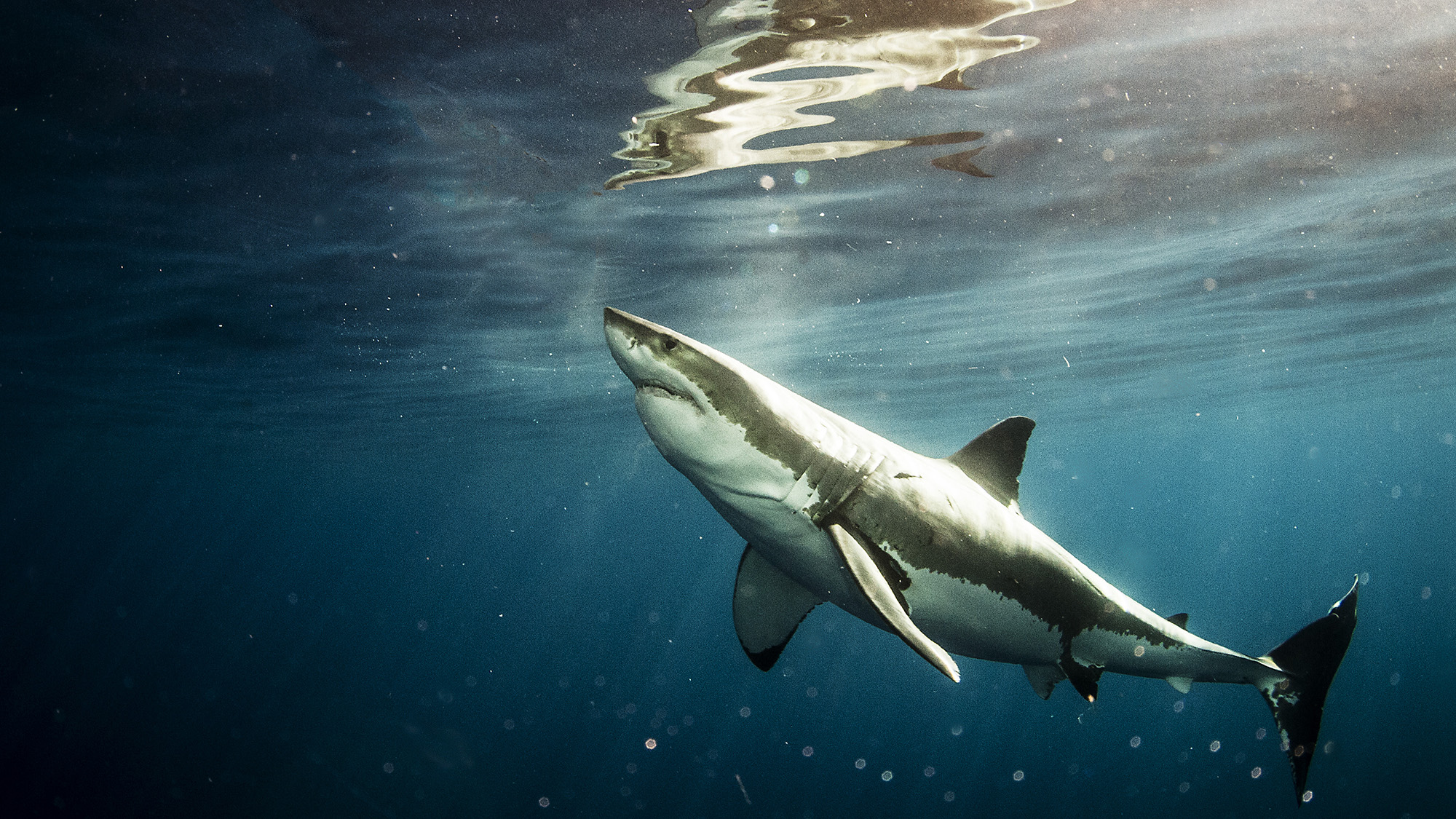

This article was originally featured on Hakai Magazine, an online publication about science and society in coastal ecosystems. Read more stories like this at hakaimagazine.com.
To see a great white shark breach the waves, its powerful jaws clasping a shock-struck seal, is to see the very pinnacle of predatory prowess. Or so we thought. Several years ago, in South Africa, the world was reminded that even great white sharks have something to fear: killer whales.
Long before they started chomping on yachts, killer whales were making headlines for a rash of attacks on South African great white sharks. The killings were as gruesome as they were impressive. The killer whales were showing a deliberate sense of culinary preference, consuming the sharks’ oily, nutrient-rich livers but leaving the rest of the shark to sink or wash up on a nearby beach.
From the initial news of the attacks, the situation only got weirder. Great white sharks started disappearing from some of their best-known habitat around South Africa’s False Bay and Gansbaai regions, in the country’s southwest.
“The decline of white sharks was so dramatic, so fast, so unheard of that lots of theories began to circulate,” says Michelle Jewell, an ecologist at Michigan State University Museum. In the absence of explanation, pet theories abounded. Some proposed that overfishing of the sharks’ prey to feed Australia’s fish and chips market led to the shark’s declines. Other activists misinterpreted that idea and went on to campaign against what they thought was the recent inclusion of great white shark meat as a surprise ingredient in Australian fish and chips. That idea was, fortunately, thoroughly debunked.
Others thought the disappearance was directly caused by the killer whales. Perhaps they were killing all the sharks?
“Any time you see large population declines in local areas, it’s cause for conservation concern,” says Heather Bowlby, a shark expert with Fisheries and Oceans Canada. “In a place where animals used to be seen very regularly, and suddenly they’re not there anymore, some were concerned that they all died.”
Now, though, scientists finally know what happened. In a recent paper, Bowlby and her colleagues show that the sharks’ disappearance was, actually, caused by the killer whales. But the sharks aren’t dead. They just moved. Across South Africa, the scientists found, the white shark population has taken a pronounced eastward shift.
To Jewell, who wasn’t involved in the research, this makes sense. “We know that predators have a huge influence on the movement and habitat use of their prey, so this isn’t really surprising,” she says. “The issue is that lots of people weren’t used to thinking of great white sharks as prey.”
Alison Kock, a marine biologist with South African National Parks and a coauthor of the study, says they cracked the mystery after reports started flowing in from sites farther east that white sharks were showing up unexpectedly. “As False Bay and Gansbaai had major declines, other places reported huge increases in white shark populations,” she says. “Too rapid to be related to reproduction, since they don’t reproduce that fast.”
“It had to be redistribution,” she says, adding: “The white sharks moved east.” Places like Algoa Bay and the KwaZulu-Natal coastline had seen great white sharks before but not anywhere near this many.
In the white sharks’ absence, South Africa’s west coast is changing. New species like bronze whalers and sevengill sharks have moved into False Bay. For the tour operators who ran shark dives in the area, however, the shift has been difficult. Some have survived by switching to offering kelp forest dives—driven in part by the popularity of the documentary My Octopus Teacher. Many, though, have gone under.
But what of the great white sharks’ new home farther east? No one quite knows how these regions are adapting to a sudden influx of apex predators, but scientists expect some significant ecological changes. They’re also warning of the potential for increased shark bites, since people living in the white shark’s new homes are not as used to shark-human interactions.
We may never know exactly how many white sharks died in killer whale attacks. The prized, presumably tasty, livers targeted by the killer whales help white sharks float, which means many dead white sharks may have sunk uncounted. Overall, though, Kock is glad to see the mystery solved.
“This has been very worrying for me, and it was good to see evidence that they hadn’t all died,” says Kock. “But it’s still unbelievable to me that I can go to [False Bay’s] Seal Island and not see any white sharks. It’s something I never expected, and I miss them a lot.”
This article first appeared in Hakai Magazine and is republished here with permission.